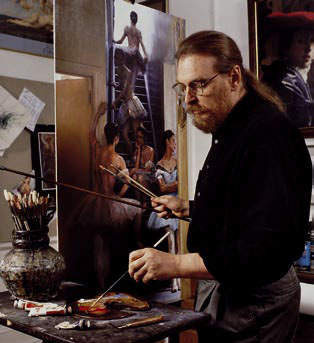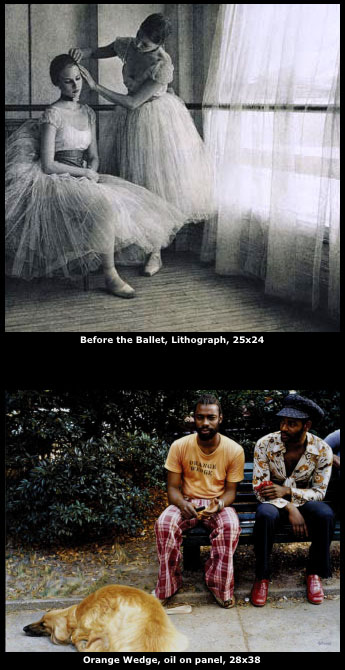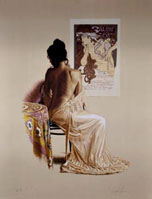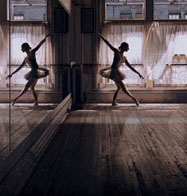|
Douglas Hofmann
|
|||||||||
|
Douglas Hofmann was born in Baltimore and has lived there all his life. In 1963, he enrolled in the Maryland Institute College of Art, where he studied with Joseph Sheppard. From Sheppard, Hofmann learned the painting style of the Dutch masters, which Sheppard had learned from Maroger. The Maroger techniques and medium are essential to Hofmann’s work. “The main thing about the [Maroger] medium is that you can paint thin,” Hofmann explained. “It gives you a lot of control and allows you to draw. . . . Drawing is everything. Painting is not painting; painting is drawing with paint” (Legacy 2004). In an autobiographical essay, Hofmann (2003) wrote that both 17th-century realist painters and the impressionists of the 19th and 20th centuries inspire him. He particularly admires the work of the 17th-century Flemish painter Jan Vermeer. “Vermeer showed me that an artist could be extremely successful by placing a normal person in a real room with good or at least interesting lighting and attempting to paint merely what he saw,” Hofmann wrote. “On its face, a Vermeer painting might seem simplistic, but in truth portraying the complexities of real images correctly is insanely difficult.” Although Hofmann’s style differs from that of the impressionist painters of the late 19th century, the impressionists’ choice and treatment of subject matter appealed to him. “The images presented in this era were so often keyed into ordinary daily scenarios,” Hofmann wrote. “For the painters of this era, even when an image was contrived, the goal was to leave the viewer with some insight into the characters. Like [Edgar] Degas and [Edouard] Manet, my goal is to leave to the viewer some tangible emotional feeling or insight into the subject.” Hofmann’s art has evoked comparisons with Degas because dancers have figured prominently as subjects in the oeuvres of both artists. A reviewer for the Baltimore Sun, praising two of Hofmann’s dance-inspired paintings, Dancing at Dusk and Before the Ballet, wrote that both works “are endowed with a lovely soft light, a feeling for space, and realistic detail down to the grain of the floorboards and the transparency of a skirt with the dancer’s leg and a chair leg showing through the material. These are sensitive as well as technically accomplished” (Dorsey 1991). In 1994, Hofmann painted famed ballerina Susan Jaffe of the American Ballet Theatre for the cover of Dance Pages magazine. In addition to painting, Hofmann is also a master printmaker. He creates his lithographic prints by breaking down his original image into 15 to 20 component colors. He then draws each color, and the print is put through the press once for each color in the image (Legacy 2004). Hoffman has had numerous solo and group exhibitions in museums and galleries in cities throughout the United States, including the Butler Institute of American Art, Youngstown, Ohio; National Academy of Design, New York; and the Maryland Institute College of Art, Baltimore. He has also exhibited in Tokyo, Japan; Hong Kong, China; and London and Birmingham, United Kingdom. His paintings are in the permanent collections of the Joslyn Art Museum, Omaha; the Delaware Art Museum, Wilmington; Nassau County Museum of Art, Roslyn Harbor, New York; and the Westmoreland Museum of American Art, Greensburg, Pennsylvania. Hofmann has received numerous first prizes and Best in Show awards. References Dorsey, John. 1991. Some artists venture beyond dance clichés at Life of Maryland show. The Baltimore Sun, 19 august 1991, p. 1C. Hoffman, Douglas. 2003. Background and history. Windsor Fine Art . The Legacy: a tradition lives on. 2004. Produced and directed by Joseph Sheppard. 35 min. Videocassette. |
|||||||||
 |
|||||||||
 |
|||||||||
 |
|||||||||
 |
|||||||||
|
Salon des Cent,
Lithograph, 29x20 |
Dancing at Dusk
Lithograph, 35x33 |
||||||||